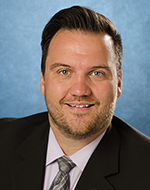Page Content
 The Fraser Institute’s annual ranking of Alberta schools based on standardized testing results came out on Thanksgiving weekend, and while I do not want to waste any more time on them than they deserve (which is none), it spurs some thinking for me.
The Fraser Institute’s annual ranking of Alberta schools based on standardized testing results came out on Thanksgiving weekend, and while I do not want to waste any more time on them than they deserve (which is none), it spurs some thinking for me.
We spend a lot of time focused on data related to the outputs of education, whether that is focusing on the Fraser Institute report or the latest results from the Programme for International Student Assessment (PISA). But do we spend enough time looking at the inputs of education?
Research tells us that out-of-school factors account for 60 per cent of the variation in student achievement on standardized tests. So I wonder why so much time and energy are devoted to debating which instructional techniques are used in elementary mathematics, for example, as opposed to talking about what we can do to make sure students have their best chance to succeed in school.
|
Fifteen per cent of students have an identified special education need. One in six live in poverty, and 41 per cent of our classes include a significant number of students learning the language of instruction.
|
Let us take a second and talk about the work of teaching.
Students are unique and diverse people, not simply empty boxes waiting to be filled with knowledge. They have unique home lives and backgrounds that affect their learning.
Fifteen per cent of students have an identified special education need. One in six live in poverty, and 41 per cent of our classes include a significant number of students learning the language of instruction.
There is no such thing as a normal student. Each student comes into school with a different social, emotional and academic background. We have students of different races, religions, ethnicities, sexual orientations, gender identities, beliefs, ideologies and experiences. Their families and home lives are equally diverse: one-parent, two-parent, no-parent, same-sex parents, grandparents, aunts and uncles living at home, only-child, first-child, last-child, and some have children of their own.
We take them all — usually in groups of 25 or 30 — and try to impart to them the knowledge, skills and attitudes related to hundreds of prescribed learning outcomes.
Students are also real people living real lives. On any given day students might be facing issues related to food security, family breakup, domestic violence, sexual abuse, criminal activity, addictions, health, death and loss. Among other things, fear, anxiety, worry, hunger, anger, sickness, sadness, joy, love, regret and/or remorse can all affect a student’s ability to learn.
Teachers are not able to address all of the issues facing students; nonetheless, those issues still arrive in the classroom. Teachers do their best to take what they are given and to help all students learn the curriculum.
Society hopes that after 13 years of education, each student with their uniqueness and diversity will be able to move into the world as a successful adult and citizen.
Society expects a lot out of the school system. But I wonder if we need to expect more from society.
What can society do to make sure students have their best chances in school? My answer: focus on students’ readiness to learn and teachers’ conditions of practice.
How do we make sure that students come to school ready to learn? It starts with making sure that preschool children have the best opportunities to start school on an equal footing.
Vulnerable students must have access to funded full-day kindergarten and junior kindergarten programs regardless of where they live. Universal, affordable, high-quality child care will help address social and financial inequity. Look at continuing work on income inequality, income supports, tax fairness and affordable housing in order to alleviate systemic poverty.
Then we need to ensure that students are ready to learn day to day. Ensure every school has a trained teacher counsellor and that students have quick and easy access to other para-professional supports and wrap-around services. Universal school breakfast and lunch programs would prevent children from trying to learn on an empty stomach or worrying about where their next meal will come from.
Finally, society can help teachers do their best work for students by making sure they have the best conditions of practice. It’s vital that all students have the supports they need. We need to have an adequate number of educational assistants, learning coaches and language learning specialists. Then we need to have small enough classes so that teachers can relate more and better with students individually to ensure that their learning and other needs are less likely to go unaddressed.
I don’t know about you, but I am starting to get tired of this worthless debate over test results, “fixing” curriculum and so-called discovery math. If we want to get real about improving education outputs, let’s focus on fixing the education inputs. ❚
I welcome your comments—contact me at jonathan.teghtmeyer@ata.ab.ca.
